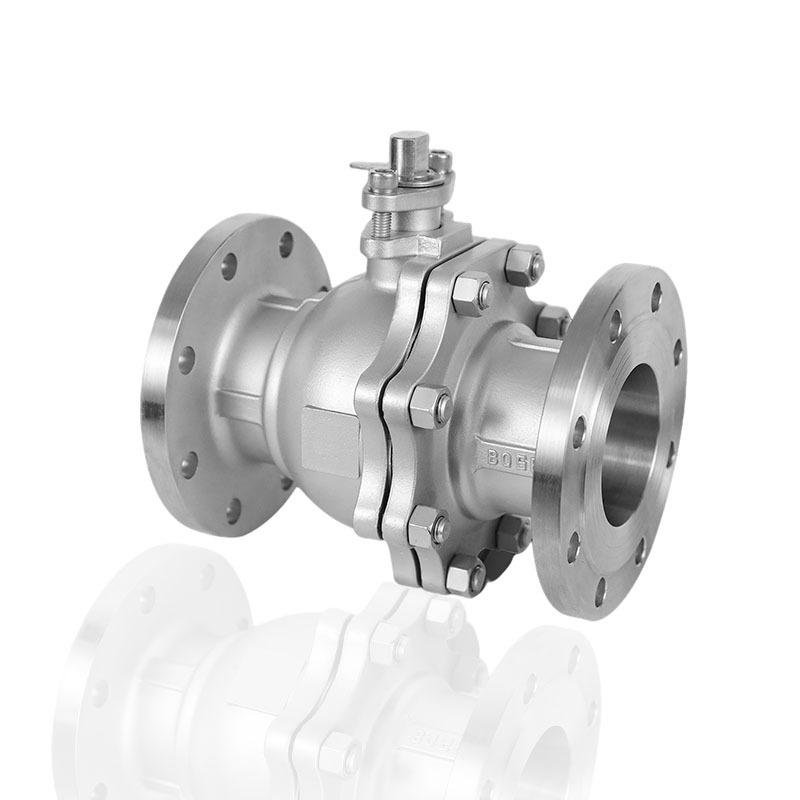هاتف : +86-18059296519
Whatsapp : +8618059296519
بريد إلكتروني : [email protected]
الصمام الكروي مقابل الصمام الكروي: فهم هيكلها ومكوناتها الرئيسية
مكونات وهيكل صمام الكرة الأرضية
وتحظى بشعبية كبيرة بسبب أجسامها الكبيرة وأشكالها المميزة، مثل "Y" أو "Z"، والتي سنتحدث عنها بشكل أكبر لاحقًا. يضم جسمه جميع المكونات الداخلية المهمة الأخرى للسماح للصمام بالقيام بعمله. المكونات الأخرى هي التالية:
القرص: المكون الذي يتحرك لأعلى ولأسفل، مما يسمح أو يمنع تدفق المواد عبر الصمام. قد يكون مكون الختم سدادة أو كرة، على الرغم من أن تصميم القرص شائع الاستخدام.
الجذع: يربط القرص والمشغل. ولذلك، فهو يسمح لك بسحب مكون الختم لأعلى أو لأسفل من خلال تدوير المشغل.
المقاعد: عادة ما تكون مصنوعة من مواد مثل التيفلون والفولاذ المقاوم للصدأ. وهي عبارة عن حلقة يتم الضغط على القرص عند إغلاق الصمام.
غطاء المحرك: يتم تثبيته في جسم الصمام مع تعبئة الجذع لمزيد من التسرب.
التعبئة: مكون حيوي لأنه بمثابة ختم ثانٍ لمنع التسرب عند الجذع.
المحركات أو المقابض: تُستخدم لرفع أو خفض الجذع لفتح وإغلاق الصمام يدويًا. يمكن أن يكون بمثابة رافعة للأحجام الصغيرة أو عجلات يدوية للأحجام الأكبر.
مكونات وهيكل الصمام الكروي
وهم معروفون أيضًا بأجسادهم المستديرة. ومع ذلك، فهي متاحة بسهولة أكبر بأحجام أصغر. كان يحتوي على مكونات مماثلة للصمام الكروي، مثل الجذع ومكون الختم المتصل بالمشغل.
ولكن هناك فرق بينها وبين الصمام الكروي من حيث بنية المكونات. فيما يلي بعض الفروق المهمة التي يجب مراعاتها:
الكرة: هذا هو عنصر الختم لهذا الصمام. يشتمل على فتحة في المنتصف يمكن محاذاتها مع الأنبوب، مما يسمح بتدفق المواد. عند تدويرها، قد يكون هذا بمثابة ختم، مما يسد المسار. على عكس الصمام الآخر، لا يمكن أن يكون مكون الختم عبارة عن سدادة أو قرص.
المقاعد: تقع مقاعدها على جانبي الكرة، من الأعلى والأسفل، لتكوين إغلاق محكم عند إغلاق الصمام. غالبًا ما تكون مصنوعة من مواد أكثر ليونة مثل PTFE (Teflon).
الفرق بين الصمام الكروي والصمام الكروي: مبدأ العمل
صمام الكرة
تتم محاذاة فتحة الكرة مع الأنبوب للسماح بتدفق المواد من خلاله عند تشغيل المشغل. لكن تدوير المشغل في الاتجاه المعاكس يؤدي إلى تدوير الكرة بمقدار 90 درجة، ويواجه الجزء الصلب ممر الأنبوب.
لذلك، هذا يغلق الصمام لأن الكرة تسد المسار. علاوة على ذلك، فإن المقاعد الموجودة في الكرة تمنع التسرب أثناء إغلاقها.
صمام الكرة الأرضية
يقوم المشغل بتحريك الجذع والقرص لفتح الصمام أو إغلاقه. يمكنك القيام بذلك عن طريق تدويره لرفع الجذع والقرص من المقعد.
كلما رفع الجذع القرص من المقعد الثابت إلى أعلى، أصبح الممر أوسع، مما يسمح بمرور المزيد من المواد. من ناحية أخرى، يؤدي خفض القرص إلى منع أو تقليل كمية المواد التي تتدفق عبر الصمامات.
وبالتالي فإن حجم الفتحة يحدد معدل التدفق.
الصمام الكروي مقابل الصمام الكروي: عملية التصنيع
من السهل تصنيع الصمامات الكروية لأنها تحتوي على مكونات أقل وتجميع أبسط من الأخرى.
كان على مصنعي الصمامات الكروية أيضًا ضمان التوافق الصحيح للمكونات المختلفة، مثل المقعد مع الجذع، من أجل ضمان جودته. وهذا يساهم في عملية التصنيع الصعبة لهذه الصمامات.
علاوة على ذلك، كلاهما مصنوع من مواد متينة مثل:
بلاستيك
سيراميك
المعادن مثل الفولاذ المقاوم للصدأ
ومع ذلك، يتم اختبار الصمامات الكروية في الغالب لقدرات الإغلاق السهلة والتشغيل اليومي البسيط. من ناحية أخرى، يتم عادةً اختبار الصمامات الكروية للتأكد من فعاليتها في الغلق والاختناق.
